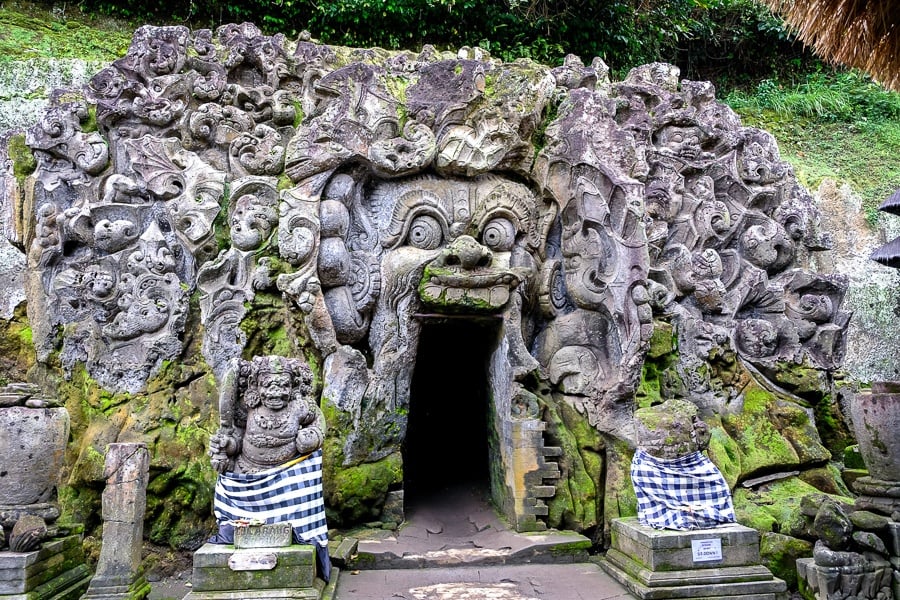Summary
The Goa Gajah temple, also known as the Elephant Cave, is one of the oldest and most intriguing Hindu temples located in Ubud, Bali. This travel guide provides essential information on how to get there and what to anticipate during your visit.
Where To Stay




Goa Gajah Cave Temple
Goa Gajah is an open and inviting temple for tourists. The cave’s interior features a narrow pathway that extends approximately 15 meters (50 ft) deep, where visitors can find incense baskets reminiscent of Hindu rituals.
This cave temple evokes the spirit of locations like the Buddha Park in Vientiane, Laos, yet offers its unique charm. It’s easy to understand why Goa Gajah was considered for UNESCO World Heritage designation back in 1995.
Dating back to the 9th century, the temple’s name translates to ‘elephant cave’, though the reason behind this name remains a mystery.


At the parking area of Goa Gajah temple, there’s a cement statue of an elephant, enshrined in moss, connecting to the temple’s name. While Bali may lack a dedicated elephant temple, this spot serves as a close alternative despite the statue’s modern appearance.
Once you’ve explored the cave’s entrance and interior, the main attraction lies in appreciating the lush banyan trees surrounding the area. Therefore, if you seek something grand, you may leave a bit unsatisfied; however, it remains a remarkable spot to discover during your Ubud journey.
Hours & Entrance Fee
- Hours: 8 AM – 5 PM
- Entrance Fee (Adults): 50k IDR (~$3)
- Entrance Fee (Kids 5-11): 25k IDR
As of 2024, the entrance fee and hours remain current; however, this temple’s popularity often leads to periodic increases in the ticket price.
The entrance fee grants access to a sarong for temple decorum. Visitors should ignore vendors offering overpriced sarongs near the cave entrance.

What To Wear To Temples In Bali
To enter most temples in Bali, including Goa Gajah, wearing a sarong is mandatory. A sarong – a traditional wrap skirt tied at the waist – is typically available for rental at a nominal fee of around 5,000 Rupiah (less than one US Dollar). Thankfully, at Goa Gajah, this item is provided complimentary with your ticket purchase.
How To Get To Goa Gajah
Goa Gajah, the elephant cave, is conveniently located near Ubud, Bali, merely a 10-minute drive east from the bustling Ubud market and town center.
For an enjoyable journey, consider renting a scooter or hiring a private car and driver. Both options may be arranged online for added convenience.
More Bali Temples
For those interested in discovering more about the cultural heritage in Bali’s remarkable temples, consider looking into additional resources that explore comprehensive options including images and maps.
Bali Private Driver & Motorbike Rental
If comfort and safety are priorities during your Bali explorations, consider traveling in a private car with an English-speaking driver. A great option is GetYourGuide.
With prices starting at 700k Rupiah (~$48 USD) for a full day’s sightseeing (up to 10 hours), this package serves 1-5 passengers and covers all costs including fuel. Consequently, it represents fantastic value.
For travelers preferring the thrill of a motorbike, rental options are also available. Scooter rentals start at 140k Rupiah (~$9) and typically include essential gear like helmets, raincoats, and free delivery in southern Bali.
Having utilized GetYourGuide for numerous activities worldwide, their service is notably excellent and comes highly recommended.





